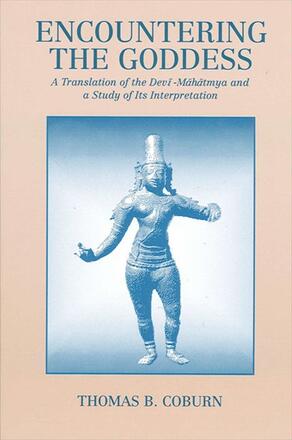
Encountering the Goddess
A Translation of the Devī-Māhātmya and a Study of Its Interpretation
Alternative formats available from:
Description
Coburn provides a fresh and careful translation from the Sanskrit of this fifteen-hundred-year-old text. Drawing on field work and literary evidence, he illuminates the process by which the Devī-Māhātmya has attracted a vast number of commentaries and has become the best known Goddess-text in modern India, deeply embedded in the ritual of Goddess worship (especially in Tantra). Coburn answers the following questions among others: Is this document "scripture?" How is it that this text mediates the presence of the Goddess? What can we make of contemporary emphasis on oral recitation of the text rather than study of its written form?
One comes away from Coburn's work with a sense of the historical integrity or wholeness of an extremely important religious development centered on a "text." The interaction between the text and later philosophical and religious developments such as those found in Advaita Vedanta and Tantra is quite illuminating.
Relevant here are the issues of the writtenness and orality/aurality of 'scripture,' and the various ways by which a deposit of holy words such as the Devī-Māhātmya becomes effective, powerful, and inspirational in the lives of those who hold it sacred.
Thomas B. Coburn is Charles A. Dana Professor of Religious Studies and Classical Languages at St. Lawrence University. He is the author of Devi-Mahatmya: The Crystallization of the Goddess Tradition.
Reviews
"Encountering the Goddess is likely to be the standard scholarly translation for years to come. "--C. Mackenzie Brown, Trinity University